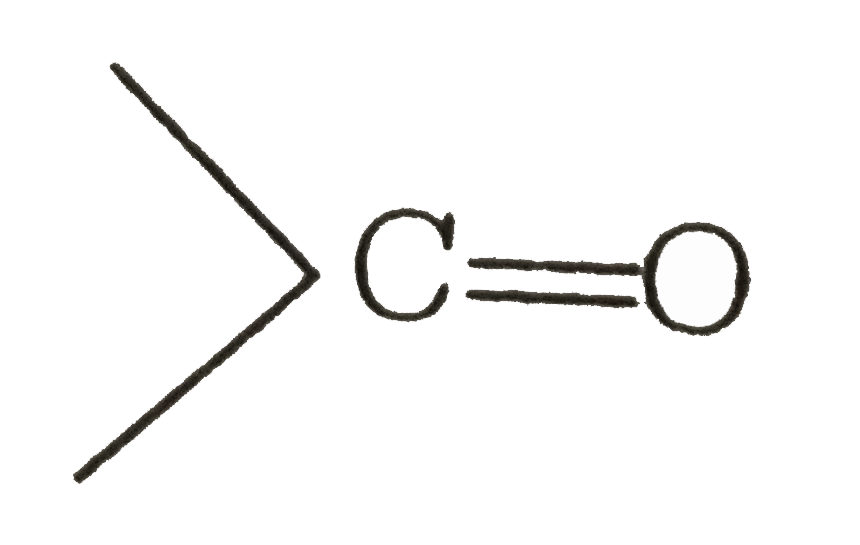Nucleophilic addition reaction will be most favoured in
A
B
C
D
Video Solution
Text Solution
The correct Answer is:D

The carbonyl compounds undergo nucleophilic addition reaction because oxygen is more electronegative than carbon. As such, it withdraws shared -electron pair towards itself and gets partial negative charge, therefore carbon get partial positive charge and becomes susceptible to nucleophilic attack.
Aldehydes are more reactive than ketones towards nucleophiles is based upon the positive charge
Present on carbon atom of  group, in aldehdye
group, in aldehdye 
group is present with at least one lakyl group (except formaldehyde) which has +I-effect (electron donating effect) and which decreases the positive charge of carbon, thereby making the attack to nucleophile difficult. the nucleophilic attack becomes more difficult in ketones having minimum of two alkyl groups.
Hence, by means of attachment of alkyl groups (due to +I-effect) rate of nucleophilic addition decreases. That means density at C-atom decreases Order of +I-effect in alkyl group

Order of nucleophilic addtion in given carbonyl compound is
|
Topper's Solved these Questions
Similar Questions
Knowledge Check
Nuclepphilic addition reaction will be most favoured in
ACH3CH2CHOBCH3CHOCCH3CH2CH2COCH3D(CH3)2C=ONucleophilic addition reaction is most favored in
A B
B C
C D
D
An aldehyde can give nucleophilic addition reaction with :
AHCNBNaHSO3CR-Mg-XDNH2NH2
Nucleophilic Addition Reaction Part-1
View SolutionNucleophilic Addition To Alkyne
View SolutionFor nucleophilic addition reaction, which of the following compound is more reactive than acetone?
View SolutionThe reactivity of carbonyl compounds towards nucleophilic addition reaction gets affected by
View SolutionAssertion: Aldehyde and keton ungergo nucleophilic addition reaction with carbon nucleophile and undergo nucleophilic addition-climination reaction with nitrogen Nucleophile.
Reason : Addition of nuclephile on aldehyde and keton form retrahedral intermediate , in case of tertahedral intermediate of nitrogen nucleophile nonbonding molecule to eliminate while in case of carbon and hydrogen nucleophile nonbonding electron are not present.
View Solution
